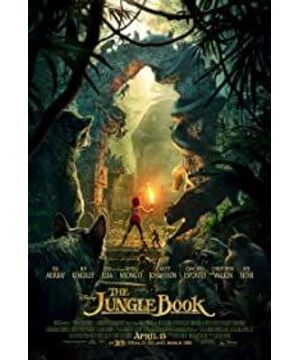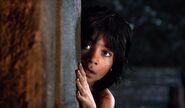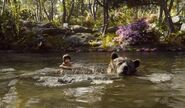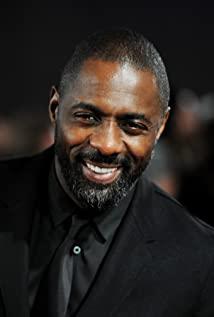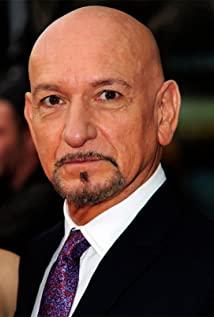--------------------------------- ----------------------- After
watching the film, the feeling is that after Disney finished "Zoo City", he was excited about his animal hair technology, so he patted his head. Pull out Jungle Book and redo it again... The
story basically follows the plot and characters (beast design?) of the 1967 cartoon "Prince of the Forest", and even three songs (Bare Necessities, I Wanna Be Like You, Trust in Me) are copied, can you save a little more trouble? 2333
(Students who are interested in Bear and Leopard CP can watch the 1967 version of the animation , although they are young, but there is a blind dog's eye proposal (big fog)
Let's talk about it first Visual effects. Animal hair, wet body play, etc. are certainly worth showing off, and the details of the movements of small animals are also very interesting, but the movements of large animals are obviously not stretched and natural. It's very stiff, and with a very realistic shape, it almost produces the effect of the uncanny valley - very real, but there is something wrong. (Am I the only one who thinks so?)
However, this is also related to the small actor's Stiff performances complement each other - although I know it's very hard for a little boy to act alone against green things of all shapes, but this little boy is completely, completely, not at all like a wild child, much less like Wolf child.
Not to mention overly clean hair and nails, not fat or thin, or a muscleless figure (but the legs are really long), and red underwear with a magical and long-lasting material - these can be used in "children's films" Well, the protagonist's image should be kind and cute" and "following the settings of the 1967 version", but in addition to the dazzling sports footage showing the chasing scene of the wolf child's flexible posture, the little boy even jumped off a rock. , like me, has none of the dexterity of a wild child, let alone the grace of a beast. The lines, facial expressions, and emotional scenes are also a little rushed, and only those comical expressions with excessive force are impressive.
Let's talk about the plot and the theme. There are many places in this film that pay tribute to "The Lion King", such as the tiger killing the wolf king to usurp power, the little boy escaping from death in the Valley of the Bulls, following the optimist homeless after breaking away from the group, and the final method of the tiger's death. But the whole film is far from the shock of "The Lion King". "The Lion King" uses lines, scenes and music to express sadness, fear, escape and awakening deeply and grandly; while most emotional scenes in "Fantasy Forest" are sloppy. , the scene did not get the atmosphere together.
When discussing the topic of "identity", it is only highlighted that "people can use tools, but beasts can't; beasts don't like people, but they still admit that people are awesome." Little boys basically don't need to struggle, as long as they insist on using their strengths to be themselves. This story is in line with a classic American comedy theme: "The funny bear child is usually hated, but he has made great contributions in the face of emergencies, and has been affirmed and loved", but he moved to the Indian jungle.
The animals did not reject the boy either: the wolves sent Mowgli away just for his safety; the tiger took pains to provoke him for a long time without realizing that he was speaking to a group of babies who didn't understand anything, and of course the effect was very good. Not obvious; in the end Mowgli burned half the mountain without criticism, and naturally returned to the wolves.
In fact, Kipling's Book of the Jungle is a story that is as violent and full of grief and anger as "Nezha in the Sea" (not). Kipling's Mowgli was first betrayed by wolves and then expelled by humans. After a short period of sadness and confusion, he decided to take revenge. He not only trampled tigers with the help of buffaloes, but also persuaded elephants to trample human villages. Of course, such a plot certainly cannot be copied on the screen. But the human-beast conflict and inner conflict in the book were canceled, leaving only the conflict between Mowgli and the villain Tiger (and the Jazz King of the Gorilla from the animated version), and the story line became very simple.
Both "Fantasy Forest" and "The Lion King" belong to a certain degree of traditional stories with clear camps of good and evil, but the former lacks the latter's classical tragic exploration of inner struggles; from another perspective, "Fantasy Forest" " and "Zootown" both promote the modern values of breaking through stereotypes, exploiting expertise, and self-realization, but the former lacks the latter's seriousness and wisdom that reflect the complex workings of society.
Of course, there are a lot of bright spots in this movie. There are a few that are great adaptations, both compared to the 1967 edition and the original book:
The expression of "Safflower" and the human village is very artistic, both mysterious and beautiful; the
tiger and Mowgli have a "double murder of the father" - the tiger first killed Mowgli's father, and then killed Accra, like his father (there are no two pots in the book or in the animation); the
giant python turned sexual and became a sexy villain, the beautiful snake; the
old bear Balu is a hundred times cuter than in the book and in the animation, trying to fool Mo Gerry was so charming; when the
black panther led the boy to bow his head in worship in front of the godlike elephants, there was indeed a sense of sacredness;
Mowgli stole fire but could not play, and accidentally caused a forest fire. Children are very educational, etc.
There are also many plots that make people startled and play instantly:
Mowgli has experienced two major natural disasters, running of the bulls and landslides, but nothing happened. He is really like Jiang Liuer in "The Return of the Great Sage". ;
for the first time without any protection at failure hive, and later also of protective equipment like child's play, but it has not been stung by a bee into a pig;
wolf-cub who actually dirty water with a small scoop to scoop a little wash, instead of a tour and flew into the water The
tiger's final death is astonishingly stupid; the
elephant herds know how to put out water to put out fires, and large forest fires can be completely extinguished by a little water overflowing the river, and so on.
I guess it may be that the budget for this film is not large and the production time is short, so many things cannot be considered carefully. Still, I feel sorry for Kipling's Jungle Book - at Disney's level, it could have been better.
PS: I feel that the director may like "The Hobbit" very much: the size and neck of the Gorilla King is very similar to the Goblin King; the Gorilla King chasing Mowgli among the ruined stone pillars is very much like Simao chasing Master Snitch.
PPS: I can't help but talk about Mr. Kipling's Black Panther:
Unlike the British housekeeper in the movie, which is as well-behaved as the British housekeeper (arrogant and abstinent), Bagheera in the book is an elegant and bold madman, extremely intelligent and Very reckless. Imagine if Sirius had never been in the classroom, but had always been by Harry's side in his role as godfather.
Bagheera had been born in a cage in the King's Court, and had been collared and groomed as a child (and wasn't); he told Mowgli about this while letting the boy touch the bald patch of skin under his chin. But the black panther doesn't hate humans because of this, on the contrary, he has learned a lot about humans through observation. After his wild awakening, he broke free from the chains and escaped.
At first, when the wolves were hesitant to accept Mowgli the baby boy, the Panther bought Mowgli the right to join the wolves with a newly hunted bull, because Bagheera felt that killing the "human cub" was very inappropriate. fame, and raising him would be much more fun. (Baheera understands human beings and doesn't know the risks of "invasion," but he just likes to play with fire.) The
old bear Baloo in the book is strict with Mowgli, while Bagheera sees boys as his pets , ah no, little brother, is a bit doting too much, often having boys ride on his back or sleep on his back.
In the book, the story of "the elephant created the world" is told by the elephant himself, and Bagheera also whispered that "this story has not lost any oil or water in the process of inheritance" (meaning that it must have added oil and water), Mog Just snickering.
Black Panther and Wolf Child have gone through a lot of adventures together, but sometimes Bagheera runs away and doesn't know why.
In the Wolf Child's last story, "Running in Spring," Mowgli reaches puberty and doesn't understand that he needs a girl, only to feel unhappy all over, and Bagheera (because of heat) runs away. Mowgli returned to the parliament stone sadly, announcing that he was going to leave the jungle, but he was reluctant to part with it. When he was saying goodbye to the old bear Baloo and the python (in the book, he and the wolf boy are buddies), Bagheera came and said that he Just went hunting a bull as the price of freeing Mowgli, so the wolf-child could justifiably go away without any unease. "Remember, Bagheera loved thee." Black Panther said.
Interested students can click the link to read the original English book (I did not find a free Chinese version online):
The Jungle Book
The Second Jungle Book
is not all about wolf children, and other animal stories that have nothing to do with Mowgli .
However, Mr Kipling was a colonialist with a tendency to look down on Indians and glorify British rule, which is also reflected in his children's stories.
View more about The Jungle Book reviews


